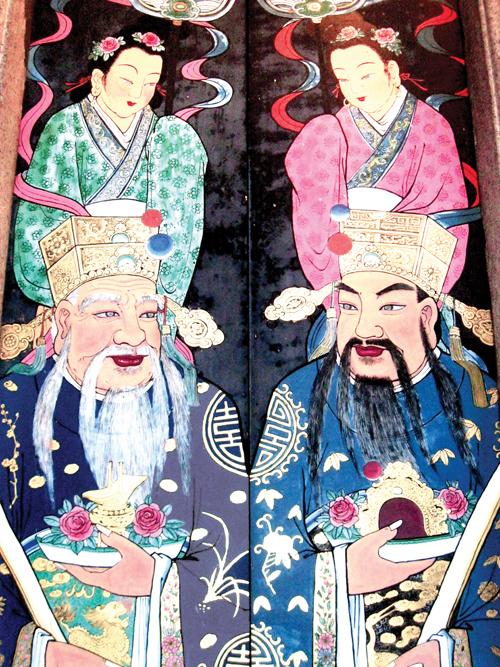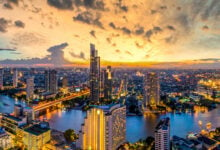Phuket Explore: Lessons from Penang

PHUKET: Despite their many similarities – architectural and historical – in terms of modern-day tourism, old town Georgetown, Penang, beats the pants off the old quarter of Phuket Town.
First of all, Georgetown got World Heritage status in 2008. You can’t get a better internationally recognized advertisement than that. Second, it knows what city tourists want and supplies it in spades: walkability and photo-ops.
Old town Georgetown’s streets are not clogged with cars like old town Phuket’s are. Where there are no sidewalks, tourists can walk safely in the street in Georgetown. Tourists like to walk. It makes them masters of their fate, and takes away the stress of haggling with taxi drivers or figuring out bus schedules.
Most importantly, walking lets tourists take photos easily. And in this day of smart phones and social networking, showing friends where you are is a key component of taking a holiday. Georgetown provides an abundance of photo-ops, most notably its Sino-Portuguese shop houses.
Penang calls these “heritage shop houses” and understands the treasure it has in them. The government program “Think City” offers funding for the repair or renovation of heritage shop house facades and roofs. Georgetown World Heritage Incorporated encourages owners and business people to protect old town Georgetown by capitalizing on its economic potential.
One program they offer is a workshop that helps local designers identify Georgetown’s “cultural DNA” in order to make more relevant souvenirs. Another group, Penang Heritage Trust, is a “watch-dog” NGO with a mandate to protect endangered buildings.
But the protection and development of old town Georgetown is not just left up to the government – private individuals are involved in preserving heritage as well. The two Peranakan mansions that have been renovated and made into museums, and many of the Chinese clan houses are privately owned. And it is private enterprise that has transformed so many historic buildings into hotels – many more of them high-end than we have in old town Phuket.
Though most of the photo-ops are free, Penang understands that tourists are willing to pay to see history. They’re willing to pay up to 20 ringgit (200 baht) to go inside the renovated Peranakan mansions, whether they offer an interesting tour (The Cheong Fatt Tze Mansion) or just guides shouting at each other and singing to themselves (Pinang Peranakan Mansion).
Tourists will even pay 10 ringgit (100 baht) to see the clan house of a Chinese family – the Khoo Khongsi (where part of Jodie Foster’s Anna and the King was filmed).
But there’s more than just old buildings for tourists to photograph in Georgetown – there’s art too. Murals by Lithuanian artist Ernest Zacharevic are scattered around the old town area and are major tourist magnets. Galleries like Whiteaways display real local art, not souvenir art for tourists. And currently there’s a 15-meter high bamboo installation a la Christo between the city and town halls – part of Georgetown’s annual month-long arts and music festival.
Yet Georgetown is not over-gentrified. Real people and real tradesmen still live there, providing yet more photo ops for tourists, like the banana-filled ceiling of a fruit store, the Indian gentleman in his two-seater green barber’s hut, men lined up praying in a tiny narrow mosque, gigantic incense sticks outside a fortune-teller’s shop.
Last but not least, there are museums in old town Georgetown – air conditioned museums with interesting, well-labeled exhibits.
All of these sights are within walking distance; the world heritage zone is just one square kilometer, and the buffer zone around it, which is equally interesting, is 1.5 square kilometers.
Tourists can easily find their way around, with clear street signs, and learn snippets of history by reading informative wall plaques. After receiving world heritage status in 2008, the Penang state government voted to put up these signs and plaques in multiple languages. The signs are in Chinese too. Like Phuket, Penang has recently seen a dramatic increase in number of Chinese tourists, not surprising, since both places figure prominently in Chinese history, having been the targets of so many Chinese immigrants.
Penang spotlights Sun Yat Sen, who planned a revolution during his four months in Penang in 1910, with a museum and walking trail.
Thailand’s Tourism and Sports Minister Somsak Pureesrisak says Phuket needs to promote high-end tourism. He would do well to follow Penang’s recipe, by focusing on history, architecture and art; creating multiple points of interest within walking distance (we need museums in town, not in Thalang and the hills of Kathu) limiting traffic in old town Phuket and encouraging the development of 5-star lodging.
Old town Phuket has what it takes to be just as good as old town Georgetown, and shouldn’t be afraid to copy.
Keep checking our online Lifestyle pages, follow us on Twitter @phuketgazette or join our Facebook fan page for updates about the latest happenings across Phuket.
— Leslie Porterfield
Join the conversation and have your say on Thailand news published on The Thaiger.
Thaiger Talk is our new Thaiger Community where you can join the discussion on everything happening in Thailand right now.
Please note that articles are not posted to the forum instantly and can take up to 20 min before being visible. Click for more information and the Thaiger Talk Guidelines.
Leave a Reply
You must be logged in to post a comment.









